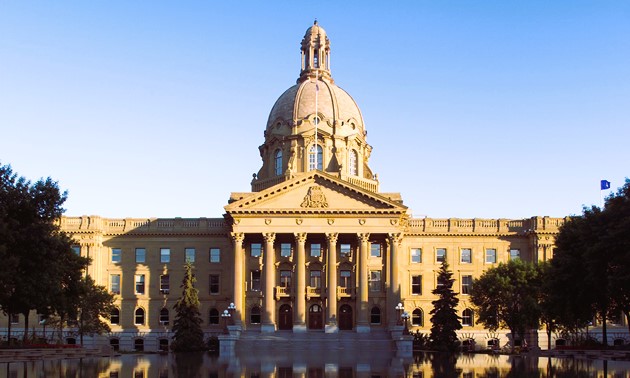Edmonton, the vibrant capital of Alberta, stands at the intersection of tradition and modernity, where historical landmarks coexist with contemporary architectural marvels. The city’s architectural landscape reflects a delicate dance between progress and preservation, as designers navigate the evolving needs of a growing urban center while cherishing the historical fabric that defines its character. In this exploration, we delve into the dynamic interplay between progress and preservation in Edmonton’s architecture, examining how the city manages to embrace the future while safeguarding its rich cultural heritage.
1. The Historic Roots: Preserving Edmonton’s Heritage
Edmonton boasts a wealth of historic architecture that provides a glimpse into the city’s past. The High Level Bridge, a striking steel truss bridge spanning the North Saskatchewan River, is an iconic example of early 20th-century engineering. As the city evolves, efforts are made to preserve these historical structures, allowing them to stand as tangible links to Edmonton’s history.
Historic districts like Old Strathcona showcase well-preserved buildings from the early 20th century, offering a charming contrast to the modern developments that surround them. The commitment to heritage preservation is evident in the adaptive reuse of old warehouses and factories, transforming them into vibrant cultural spaces, boutique shops, and residential lofts.
2. Urban Renewal: Transforming the Cityscape

As Edmonton experiences population growth and urbanization, the city is witnessing a wave of urban renewal and architectural innovation. The Ice District, a transformative development in downtown Edmonton, exemplifies the city’s commitment to modernity. Anchored by Rogers Place, the home of the Edmonton Oilers, this district blends entertainment, residential spaces, and commercial ventures in a sleek, contemporary setting.
The Stantec Tower, a prominent feature in the Ice District, stands as the tallest building in Edmonton, a testament to the city’s ambition for vertical growth. As the skyline evolves, architects and developers strive to create structures that not only contribute to the city’s economic vitality but also enhance its visual appeal. We conducted a study of the influence of Gothic architecture in historical buildings in an article about the Gothic Revival of Canada.
3. Iconic Modern Structures: Melding Innovation with Identity
Edmonton’s architectural evolution includes the incorporation of iconic modern structures that redefine the city’s skyline. The Art Gallery of Alberta, with its bold geometric design, reflects a commitment to contemporary aesthetics. The blending of glass and metal in the design of the Edmonton Federal Building demonstrates an embrace of modern materials and architectural principles.
Architects in Edmonton are increasingly exploring innovative approaches to sustainable design, incorporating energy-efficient features and green spaces. This forward-looking mindset aligns with the city’s commitment to environmental responsibility and resilience in the face of a changing climate.
4. Challenges of Balancing Progress and Preservation
While Edmonton’s architectural evolution is exciting, it is not without its challenges. The quest for progress must be delicately balanced with the need to preserve the city’s cultural heritage. As new developments emerge, the potential loss of historic buildings raises questions about how to maintain a sense of continuity and connection to the past.
Community engagement and heritage conservation efforts play a crucial role in addressing these challenges. Initiatives that involve the public in decision-making processes and advocate for the preservation of significant landmarks contribute to a more nuanced approach to urban development.
5. Adaptive Reuse: Breathing New Life into Old Spaces
One of the strategies employed in Edmonton’s architectural landscape is adaptive reuse—the practice of repurposing existing structures for new functions. This approach not only preserves the character of historical buildings but also adds a layer of sustainability to the city’s development.

The Mercer Warehouse in downtown Edmonton is a prime example of adaptive reuse, where an early 20th-century warehouse has been transformed into a vibrant commercial and cultural hub. This type of project illustrates how Edmonton can embrace modern functionality while preserving the authenticity of its historical structures.
Conclusion
Edmonton’s architectural journey is a testament to the city’s ability to balance progress and preservation. As the skyline evolves with modern skyscrapers and innovative designs, Edmonton remains rooted in its history, cherishing the landmarks that tell the story of its growth.
The ongoing dialogue between architects, urban planners, and the community is essential for maintaining this delicate balance. By fostering a collaborative approach that respects both the past and the future, Edmonton can continue to build a cityscape that reflects its dynamic identity—one that seamlessly integrates progress with the preservation of its unique architectural heritage.
For further exploration of Edmonton’s architectural standards and practices, refer to authoritative sources such as Canada’s official standards website. These platforms provide comprehensive insights into the rich history and current standards shaping the world of architecture and design in Edmonton and across Canada.
